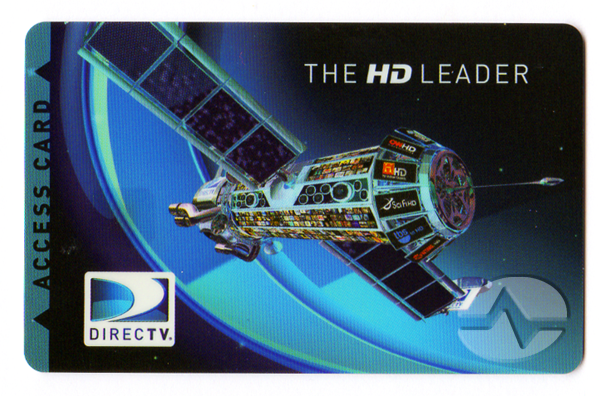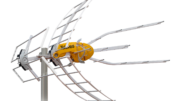Every satellite receiver and DVR in the US has some sort of access card. In most receivers it just looks like a credit card with a gold patch. So what’s the deal? And why does it seem like some receivers don’t have access cards? Let’s take a minute today and dive into this technology.
Why access cards are there
The access card forms one-third of the system used to decrypt your satellite signal. By putting one part on your hard drive, one part on a computer chip on the receiver, and one part on the access card, it makes it just that much harder to crack the encryption.
It’s like those car keys with a computer chip. You can’t start the car without them even if you hotwire it.
This whole system, known in the industry as “conditional access” is there, of course, because of money. If content providers like Disney couldn’t be sure no one was pirating their signals, they wouldn’t put them up there. If all broadcasts were free, these companies would go out of business. So, to keep content providers happy, both DIRECTV and DISH designed complex encryption schemes that rely on multiple pieces all working together.
Does every box have an access card?
The easy answer is “yes,” but it’s not really the right answer. There are some DISH DVRs like the Hopper 3 that have an internal access card. It’s still there but you can’t see it. Then, there are client boxes like DIRECTV’s Gemini and DISH’s Joey. Those devices don’t have access cards because they’re not really receiving anything. It’s the DVR that’s receiving it and just sending video to the client boxes.
To make things even more confusing, DIRECTV’s Genie 2 and the new H26K Commercial Receiver have access cards that are the size and shape of SIM cards, while every other access card used in the US is credit-card sized. Not that it really matters since you can’t move an access card from one receiver to another anyway.
Do access cards ever “go bad?”
Yes, the removable ones sometimes do. In those devices, the access card can be changed as needed. In a case like Hopper 3 where the access card is non-removable, the whole device needs to be swapped out if there’s a conditional access problem. Luckily it’s very rare.
In the past, there have been big access card swaps. If someone cracks the encryption, which may have happened before (no one’s willing to say) then issuing new access cards with more secure logic in them can make the encryption safe again. Plus, with the use of an access card, a receiver can be added or removed from a customer account as needed.
The access card in your receiver is property of the satellite company, just like the rest of the receiver, and must be returned upon request. The access card will only work in your receiver; you can’t bring it to a friend’s house and have your DIRECTV or DISH programming on their receiver, unless…
The magical “engineering card”
Your intrepid author has never seen one of these, but his high level sources tell him that there are access cards, called Engineering cards, that let any receiver receiver get any program. Other local channels, porn, what have you; if you have one of these magic cards, you’re set. The only thing is… there are maybe half a dozen of these cards in existence (no one will confirm the exact number) and they are kept in bank-vault-type safes at engineering labs all over the country. It takes a high company security clearance to get your hands on one, and there are rules about smuggling one out of the building… in other words, you don’t do it, and your life, job, and friends stay secure.
The Engineering card is more than an urban legend, it’s a verifiable fact, but it’s unlikely you’ll ever see one. On the other hand, it doesn’t take much to see an access card. Just, you know, don’t take it out of the receiver if you don’t have to; they’re fragile.
Need a new access card?
If you have a receiver that’s acting a little weird, call the experts! Call Signal Connect at 888-233-7563. We’re here for you during East Coast business hours. If it’s after hours, fill out the form below and we’ll get right back to you!





